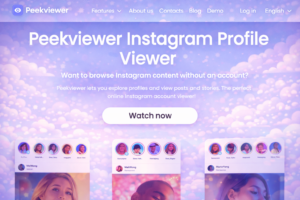The global food industry is one of the most dynamic and competitive sectors, driven by evolving consumer preferences, technological advancements, and regulatory changes.
However, the food industry is experiencing a high rate of product failures, sometimes as high as 60-70% failure to achieve commercial success.
Thus, to succeed, companies are creating new recipes and adopting an insight-driven development model. Insights are formerly known for the deep, actionable understandings of consumer behaviour, market trends, and sensory preferences, which are critical for successful food innovation.
Insights enable companies to anticipate market demands, identify gaps, and develop desirable and relevant products.
For instance, the insights from the vegan cheese market help companies to understand consumer preferences about taste, texture, as well as ethical considerations, which help to develop innovative formulations that meet evolving dietary and lifestyle preferences.
According to Pristine Market Insights, the health-focused segment is driven by increasing demand for products with added nutritional value, like B12 or probiotics.
Eventually, insights act as a bond between innovation and market success, which is crucial for companies to adopt an insight-driven approach to reduce the risk of failure and respond quickly to trends, as well as create meaningful connections with the target audience.
The Foundation: Unearthing Consumer Desires
The initial phase of any successful food product launch is dedicated to deeply understanding the target audience, as this includes data data-driven process that identifies unmet needs, pain points, and emerging desires to ensure a new product launch.
1. Understand the “Why”
The insight goes beyond identifying what people buy; they explain why consumers make some choices.
This is important in distinguishing between short-term FAD and prolonged changes in “why” consumer behaviour.
By capturing emotional and rational drivers of consumption, companies can create products that connect deeply.
Insight into “why”, the brands also enable brands to design marketing campaigns that echo emotionally, whether storytelling, stability commitments, or functional health benefits, to make the products more compelling to today’s conscious consumers.
2. Identify Pain Points
The most successful new products that solve real problems or alleviate a ‘pain point’ in a consumer’s life.
Insights not only highlight the pain point, but also guide companies to make solutions to the scale and emotional weight of the problem.
For example, the vegan cheese market is shaped by consumers who want a dairy option that does not compromise on taste or texture-both detecting health-related requirements and a sensory expectation.
Taking advantage of these insights, the brand can focus on R&D resources on resolving relevant issues, which increases the possibility of consumer acceptance and long-term loyalty.
3. Forecast Trends
The food industry develops rapidly, and the consumer’s hopes quickly change.
Companies that fully rely on previous data are often left behind, while people using further insight can estimate changes before they become mainstream.
Artificial intelligence and big data analytics now play an important role in the forecast of trends by analysing purchasing behaviour, online discoveries, social media discussions, and even restaurant menus.
This enables future start-up capacity companies to experiment with new tastes, components, and product formats that align with future demands.
The companies that estimated these values were able to bring themselves into a position as leaders in moral food innovation.
The Engine: Integrating Insights Throughout Development
Market and Competitor Analysis
Before the manufacture of any food product, companies must understand the market scenario.
Insight into consumer demand, competitive activity, and overall category growth provides the foundation for strategic decision-making.
A complete market and competitive analysis allows businesses not only to identify trends, but also to identify where opportunities remain unused.
Competitive insight only reveals more than product lines; it highlights pricing strategies, distribution channels, and marketing approaches that are resonating with consumers.
This allows businesses to differentiate effectively by highlighting their unique sales proposal (USP).
A strong USP ensures that the product stands out and addresses the needs of the consumer that the contestants have ignored.
Additionally, analysing retailer shelf space and online product reviews can directly expose expectations from consumers.
Concept and Prototype Testing
Once a product idea is formed, insight remains central to shaping its success.
The concept and prototype tests allow companies to evaluate consumer reactions in the procedure, reducing risks before investment.
This involves the presentation of product ideas, packaging concepts, or functional claims for carefully selected groups of consumers through surveys, focus groups, or digital platforms.
Such tests answer important questions:
- Do consumers understand the concept?
- Does it solve a real need?
- Does the product excite them enough to buy it?
The prototype test becomes even deeper, causing consumers to experience the product through testing, sampling events, or controlled studies.
The taste, texture, aroma, and appearance provide invaluable guidance for refinement.
Data-Driven Formulation:
The modern food innovation has gone under the scope of data-driven formation beyond testing and error.
The data can suggest which natural tastes most closely replicate the sensory experience of dairy in vegan cheese, helping brands in authenticity intervals.
Data-operated fraction also helps to adapt to regulatory compliance and nutritional claims.
Companies can design dishes that meet strict labelling requirements – such as “low sugar,” high protein, or” clean label “, with consumer appeal compromise.
By analysing a large pool of consumer data, food developers can estimate that the target viewers will respond to some taste notes, components, original or nutritional benefits, which further the formulation for market demand.
The Launchpad: Marketing and Commercialisation
The launchpad phase emphasises marketing and commercialisation, which is vital for successful product launch and sustainable growth.
This includes targeted marketing, brand positioning, and post-launch optimisation.
The goal is to create brand awareness, attract beginners, and create demand. On the other hand, commercialisation refers to the process of bringing the product to the market, including pricing strategy, delivery channels, sales procedures, and customer support systems.
This ensures that the product not only reaches the market but also receives traction and generates revenue.
Additionally, partnership, impressive marketing, and product demo can help create reliability and confidence.
The Modern Toolkit: Gathering Insights in the Digital Age:
Methods of gathering companies have developed dramatically in the digital age.
Traditional methods, such as in-tradition surveys, focus groups, and retail comments, are still useful, but technology now allows businesses to reach rich, sharp, and more actionable data.
Digital tools enable companies to make informed product decisions before tracking consumer behaviour, estimating emerging trends, and making heavy investments in growth.
This growth has been valuable in particularly dynamic markets such as vegan cheese and plant-based protein areas, where consumer preferences are shifting faster and innovation cycles are low.
Big Data and AI
Artificial intelligence and big data analytics have revolutionised insight generation by analysing vast amounts of information from sources such as social media posts, online reviews, e-commerce purchase patterns, and many other sources.
Information helps companies to get a detailed understanding of consumer spirit and behaviour.
The AI algorithm may identify emerging trends, detect unmet needs, and even guess which products are likely to be successful.
By converting raw data into actionable insight, AI enables food companies to innovate with greater accuracy, reduce risk, and develop consumer demands rapidly.
Social Listening
Social auditory complements AI-powered data analysis by focusing on online conversations, which help companies to monitor social media platforms and blogs to see how customers discuss their products. Unlike surveys, social hearing captures organic, unfiltered responses, which can highlight insight into traditional research.
Brands can use this knowledge to customise marketing messages, develop new dishes, or launch targeted products.
Social auditory also allows companies to identify those who affect companies, opinion leaders, and brand advocates, create opportunities for co-construction and community-managed innovation.
Digital Surveys and Panels
Digital surveys and online consumer panels have made statistically significant responses rapid, more flexible, and cost-effective.
These allow platform companies to reach highly targeted audiences, such as age, lifestyle, dietary preferences, or segments within the field, and gather rapid reactions to the concepts, prototypes, or packaging designs.
In markets such as vegan cheese or plant-based proteins, digital panels can help test taste preferences, product formats, or message effectiveness before production on a full scale.
The real-time nature of the digital feedback allows recurring growth; immediately, consumers can refine yoga or packaging based on input.
Compared to traditional methods, digital panels reduce lead time, increase accuracy, and provide actionable insights that directly guide the product strategy and position.
Conclusion
Finally, the modern food industry is an intensely competitive sector where the traditional approach is to rely on a single good recipe.
The fixed path of success lies in the continuous and strategic use of consumer insight.
This insight, operated by data analytics and AI, acts as an important compass, guiding a product for its permanent market appearance from its initial conception.
This is not a one-time activity, but a cyclical process that reduces risk and maximises resonance with consumers.
To launch a new product, it should be built for target audiences, such as in a vegan cheese market, where the company’s success depends on knowing whether a consumer is buying for health, stability, taste, and performance.
This knowledge indicates every decision, from formulation and packaging to marketing messages and pricing.
Finally, after the launch, insight continues to succeed through targeted marketing and post-launch adaptation, ensuring that the product remains relevant and beloved. I
n a crowded market, the most important component for success is a deeper, data-driven understanding of the consumer.









